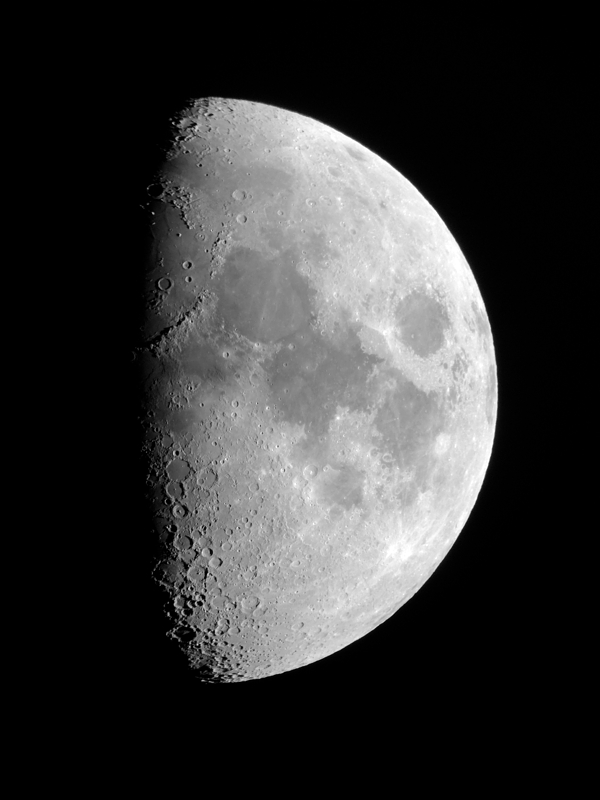iPhone Jupiter Moons;
Comet C/2015 D1 (SOHO) Hunt
Posted: 27 February 2015
|
Open: Thursday, 26 February 2015, 1814 MST Temperature: 69°F |
Session: 786 Conditions: Partly cloudy |
The forecast for the evening and night was for clear skies, but clouds began appearing in much of the sky as sunset approached. 1818 MST: sunset.
1824 MST: viewed Venus, 83X. Slight gibbous phase still visible. Then slewed to the Moon and did some brief observing at 83X. Took this handheld iPhone afocal 83X photo:

1829 MST: viewed Jupiter, 83X. At first glance it appeared there were just two Galilean Moons visible (Ganymede and Io). I then checked the free iOS app "Gas Giants" and found out that Callisto should also be visible very close to Ganymede. Checked the eyepiece again and with careful looking I did in fact see three moons. Callisto had previously been hidden in the glare from Ganymede. Also seeing was not good as there were clouds visible near Jupiter, which was still somewhat low in the sky.
1838 MST: checked the western sky, which looked like this (iPhone 5s photo):

Venus is visible near the center, but the sky did not look very promising to hunt for Comet C/2015 D1 (SOHO), assuming it survived its close pass to the Sun.
Resumed Jupiter observing. Switched to 222X. Seeing still wasn't good but I did monitor the changing positions of the three moons. These two handeld iPhone 5s afocal 222X photos, cropped from the full-frames images, show the moons (left-to-right: Callisto, Ganymede, Io) at 1842 MST and 1853 MST:


(Jupiter is overexposed in order to capture the moons with the iPhone.)
1907 MST: slewed to Mars and observed it through clouds, 83X. No details visible.
1912 MST: slewed to the star Algenib (Gam Peg), which would be a good pointer star for starhopping to the position of Comet C/2015 D1 (SOHO) as shown in a Universe Today article. Unfortunately, the western sky was getting obscured by increasing clouds. I did some scanning for the comet using my 12x70 binoculars, but by 1919 MST the target area was covered with clouds. And with Astronomical Twilight not ending for another 20 minutes, the chance to catch the comet this night was over. Unfortunately, another storm system is heading to southern Arizona with cloudy nights forecast for the next several nights.
Due to clouds in most of the sky at this point, I began closing up for the night.
|
Close: Thursday, 26 February 2015, 1931 MST Temperature: 55°F |
|
Comments are welcome using Email. If you are on Twitter you can use the button below to tweet this report to your followers. Thanks.
Cassiopeia Observatory Home Page
Copyright ©2015 Michael L. Weasner / mweasner@me.com
URL = http://www.weasner.com/co/Reports/2015/02/27/index.html
